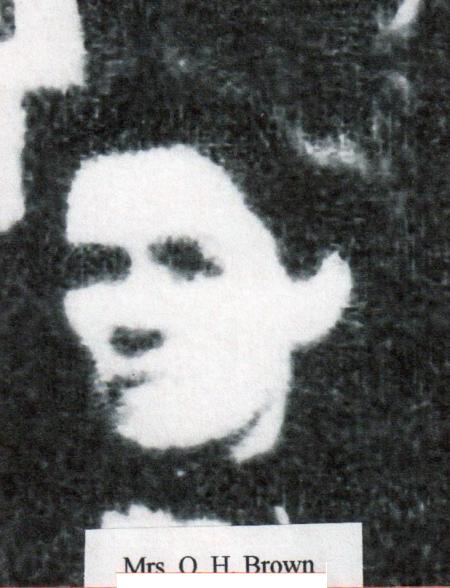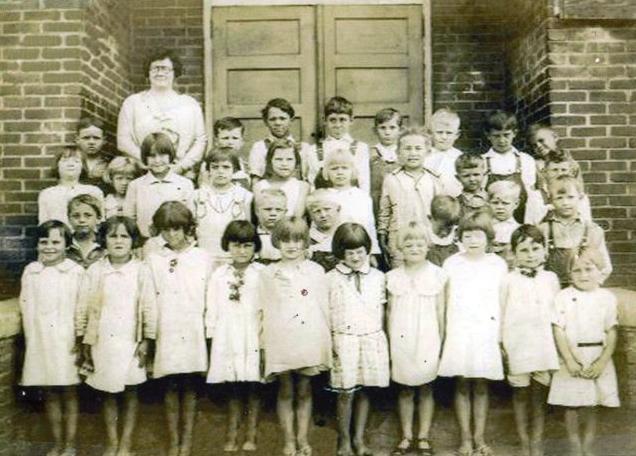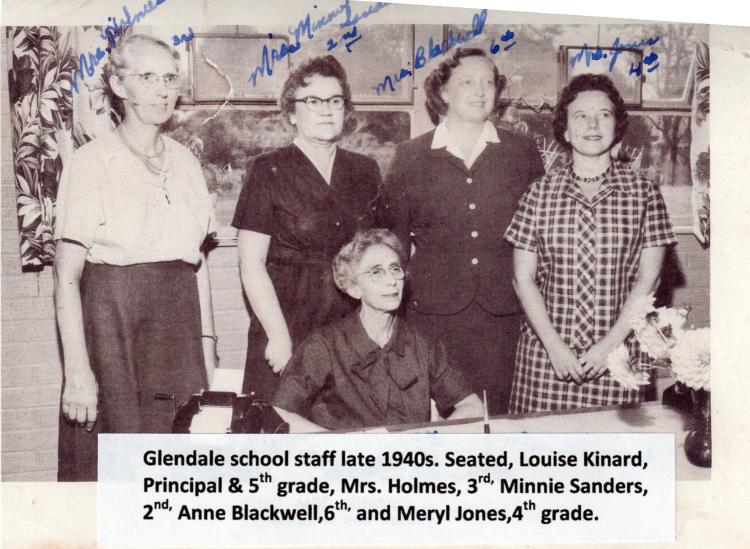The History of Glendale Elementary School
Submitted by Clarence E. Crocker
History tells us that much, if not most of the early sources of education in the United States was through private Academies and Church schools led by Clergymen. Glendale (first named Bivingsville) seems to have been no exception to this rule. While I know of no records of the fact, the word of village old timers was that Glendale’s first school classes were held in the little Community church built somewhere about 1835 by Dr. Bivings, founder of the mill and village. If that be the case, they were most probably taught by a Methodist Clergyman as Methodist was the most prominent body of Believers in the village at that time and were the first to establish a church.
Incidentally, the Spartanburg Textile Industrial Institute in Spartanburg which later became known as Spartanburg Methodist College, was founded in 1911 by Dr. David Camak while serving as Pastor of the Glendale Methodist Church. Some school histories tell us that in the early days, classes were held primarily in the months of October through February to allow the children to be available to help with the gardens and farms during the spring and summer months. They also tell us that many students left school at the ages of 10 to 12 to go to work to help the family financially, explaining at least in part, why so many of our forefathers had no more than a third or fourth grade education. Neither was high school readily available to most.
Somewhere around 1870-75, apparently after the civil war (1861-65) when D.E. Converse company was being organized, employees had been added and the village had grown, a multipurpose three story combination building was built for community activities in which school classes were held for a number of years. (see picture below. )

A few years later, a large two story wood frame building was built on Church Street where the fire station stands today for the specific purpose of serving as a school house. (see following pictures)
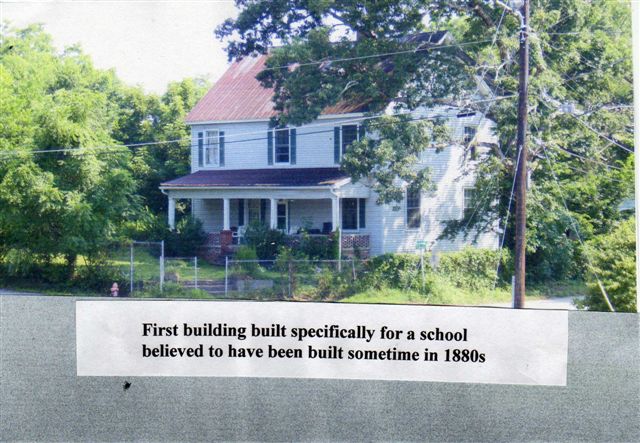

The Teacher, Mrs. Brown, shown as #2 in this picture is Olivia Howard Haynes Brown. You can read the story of her Haynes family at The Family and Descendants of Rev. Hilliard Haynes. An enlargement of her photo is shown below.

Records show that Glendale had some 100 students at the turn of the century. The wood frame building was used through 1916, being moved across the street to the corner of Church and Broadway. It was later renovated and converted into a dwelling in which mill overseers lived for a number of years before it was sold in the 1950s. A new two story brick school building ( following picture) had been built in it’s place and was opened in 1917 for grade school classes, one through seven.

The new 1917 school building from which I graduated, was a modern, well built three story building by every standard of the day. The basement contained restrooms and utility space. The first floor had classrooms only. The second story contained a large auditorium along with classrooms and was equipped with a well built outside steel fire escape. The entire school gathered upstairs in the auditorium from time to time for plays, singing, etc.
In 1934, there was an article in the Spartanburg Herald about the school. Click School Article to read this.
The class rooms were large with wood floors, high ceilings and windows. There were no fans but the windows could be lowered from the top and raised from the bottom which provided a good circulation of air. A coal fired boiler located in the basement, supplied steam to the radiators in each room for heat. Though a janitor saw that the fire was going well and the building was heated by school time, older boys took care of the furnace during school hours. Everyone walked to school and on extremely cold days our feet would get cold and we would sing marching songs, tramping our feet on the floor as we marched around the room getting our blood circulating and warming our feet.
At times the radiator air vents would become water logged preventing the radiator to heat. I had the “joy” of getting to fix them from time to time which excused me from about a fifteen or twenty minute class.
Separate spacious restrooms for girls and boys were located in the basement. We had two recesses per day referred to as first and second recess. During recess times, the older boys played baseball, football, horse-shoe and learned a little mischief while some younger boys played “marbles”. The girls played jump-rope and hop-scotch while some would flirt with the boys who had absolutely no objections. The school had no lunch room making it necessary for the students to brown bag their daily lunch from home. In the late 1940s, a lunch room was added by Glendale Mills. By mid century, Glendale had over 200 students.

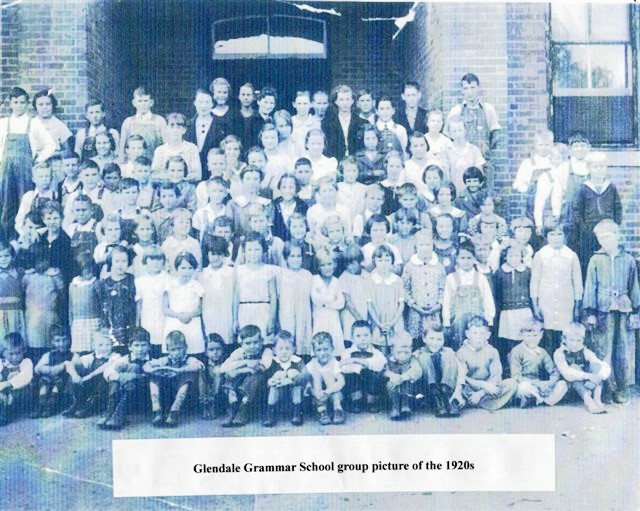
First Grade of Glendale Grammar School 1929, Mrs. J. D. Collins, Teacher
( Picture courtesy of A. W. Crocker )
L2R-1R; Leona Tonsil, Cornelia Spurlin, Hazel Simmons, Nancy Hollifield, Mary Ogle, Nancy Kirby, Ruth Moore, Helen Pruitt, Nancy Dunaway, Catherine Sizemore.
2R;Morris Worley, Robert Painter, Dennis Messer, William Bradley, Buddy Blackwell, George Boyter.
3R; Mary Johnson, Helen Ruth Solesby, Dallie Ward, Elizabeth Ledford, Geneva Bishop, Mary Sue Lindsey, Susie Mae Easler, Paul Ogle, William Hunter.
4R; Robert Solesby, Mrs. Collins, Fred Caston, Albert W. Crocker, John Strange, E. Brewington, Julius Millwood, Clarence Thomas, DuPre Alley.
 Mrs. Willie Mae Murray who served as Principal/teacher for almost twenty years made school interesting and was loved by everyone. She planned trips for the students. Though some of us were not the best example of the fact, she was a great English teacher and didn’t hesitate to correct you when and where needed. Mr. George Hayes, son of Mrs. Lillie Hayes, Glendale community nurse for many years, was U.S. Ambassador to Japan in the thirties and would send everyone of the graduating class a candle lantern from Japan every year.
Mrs. Willie Mae Murray who served as Principal/teacher for almost twenty years made school interesting and was loved by everyone. She planned trips for the students. Though some of us were not the best example of the fact, she was a great English teacher and didn’t hesitate to correct you when and where needed. Mr. George Hayes, son of Mrs. Lillie Hayes, Glendale community nurse for many years, was U.S. Ambassador to Japan in the thirties and would send everyone of the graduating class a candle lantern from Japan every year.

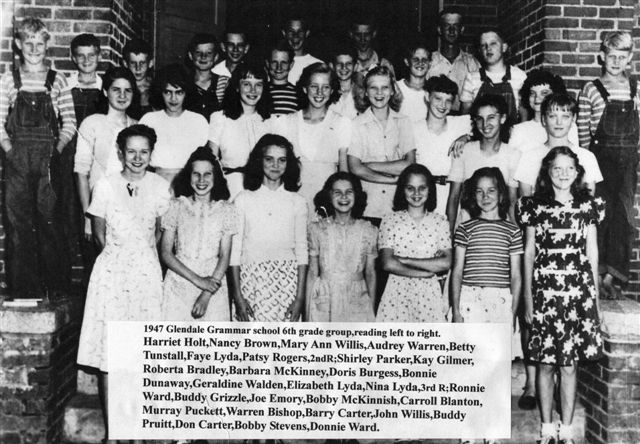

In the late forties and fifties, in conjunction with the Mill, the school would observe National Cotton week. Pictures showing some of the groups of students as they toured the cotton mill are shown below.
 The following picture of Glendale kindergarten students appeared in the Spartanburg Textile Tribune on Thursday, June 11. 1953.
The following picture of Glendale kindergarten students appeared in the Spartanburg Textile Tribune on Thursday, June 11. 1953.


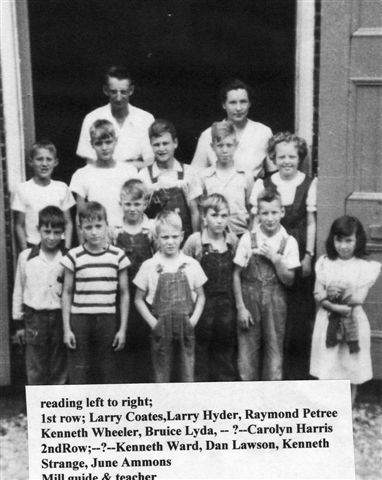

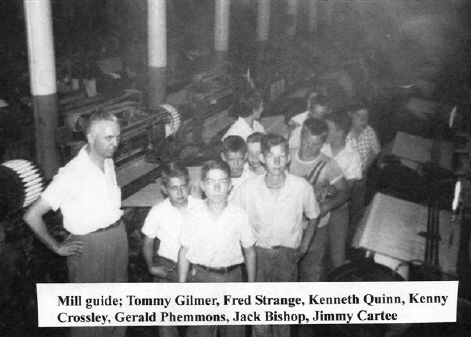
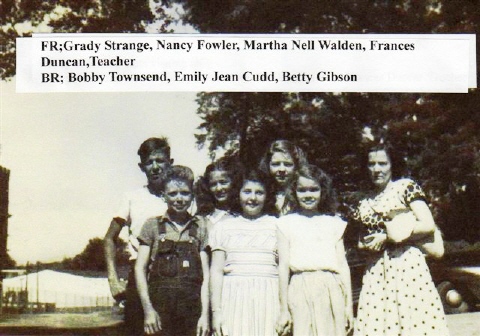
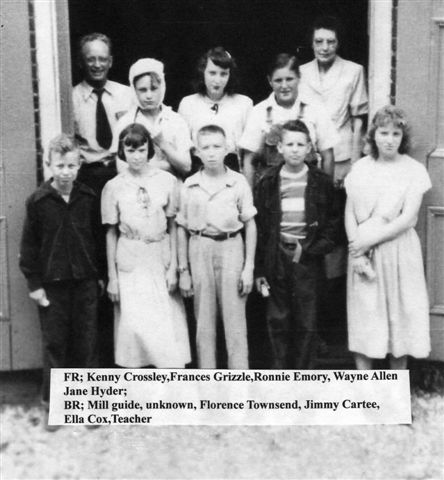

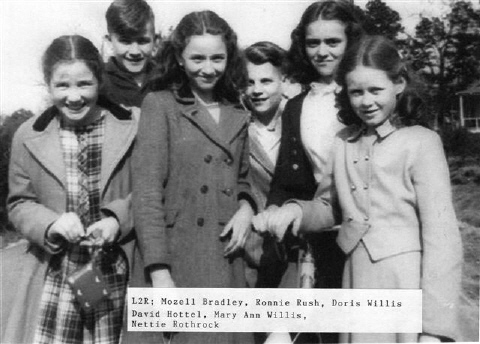
Miss. Louise Moore, who had become Principal/teacher following Mrs. Murray’s resignation, was presented a new Bell and Howell 16mm movie projector, sound and screen equipment along with $100 to pay rental fees for educational films for the school on behalf of Mr. and Mrs. Arthur C. Stifel, President and CEO of J.L.Stifel Co and Glendale Mills.
D.E.Converse/Glendale Mills. like most textile mill companies, built and maintained the school building in the village, furnishing all utilities up until mid 1900s.
In the early 1900s, those from Glendale who were fortunate to be able and sought high school education, went to Spartanburg High, grades 8 through 11 which was the highest school grade at that time. Until about 1928 they traveled by the electric trolley at which time Mr. Will F. Rogers Sr, boss carder in the mill, purchased an old bus and started transporting the students for a small weekly fee. His son, Will “Ducky” Rogers, was the first driver. After he graduated high school, Eston Crocker, my brother, drove until he graduated at which time Johnny Rogers took the steering wheel. In the late 30s, the Mill purchased a bus which Johnny drove for a good while.
Beginning in 1950 many changes took place in our school system as the state and county took over school building and operations. Up until 1950 every school for white students was considered a district within itself. If my memory serves me right, there were over one hundred districts in Spartanburg County. Glendale was District #39. By law, in May of 1950 all districts of Spartanburg County were consolidated into 12 districts. Glendale was included in District 9 along with Whitestone, Pacolet, Pacolet Mills and the Cliftons.
During the transition between districts, one school year, 1950-51 Glendale grammar school 7th grade graduates attended the eighth grade at Jenkins Junior High, transferring to Evans high for the ninth grade and then to Pacolet high for grades 10 through twelve. This I believe, was the last year Glendale students attended Spartanburg High.
In 1951 Gov. Jimmy Byrnes, believing in separate but equal schools got a 3 cents sale tax law passed for the express purpose of improving and building of new schools with emphasis on schools for the black which were sadly lacking. During Gov. Byrnes 4 year term as Governor he allotted 2/3rd of the sales tax to the improvement of black schools.
In March of 1952, again by law, the 12 districts of Spartanburg county were consolidated into 7 and Glendale became a part of district # 3 where it remains today. District #3 includes the Cowpens, Cannons, Clifton, Glendale, Pacolet, Pacolet Mills and Whitestone areas.
In 1954, the beautiful and spacious new elementary school on the Glendale/Clifton road was opened for classes and the era of the little red brick school house ended, It was later torn down to make room for the new Fire department. Though we were all proud of the new school, that was a sad day for those of us who recalled our pleasant memories of the little old red school house, our wonderful teachers and fellow students.

While the Glendale Elementary school had already been accredited by the South Carolina Department of Education (SCDE) years before, according to the district’s web site it was not accredited by the Southern Association of Colleges and Schools until 1976.
In 1976-the Cowpens and Pacolet High Schools were combined and all high school students, grades 10-12 of the district, black and white, began attending Broome High school. All Glendale elementary students continued to attend classes in the Glendale/Clifton road building until 1979 when the District opened the new Clifdale Elementary school combining the students of Clifton and Glendale. Further changes were made over later years. The Glendale school building became and is now, the Administrative Office of School District # 3.
Black students in the Glendale area first attended private schools located on the Thompson Ford road. (now Lewis Chapel) One of the buildings stands today as the home of a prominent black family of the community. About 1920 the Mill Company built a small one room school building on mill property directly in front of where Lewis Chapel Church stands today.
In 1934, another larger building was built in the same location. It was heated by a large pot belly stove and they got water from a nearby well. Outdoor privies were the order of the day. In 1968 integration was enforced and all black and white high school students from Glendale were sent to Pacolet until Cowpens and Pacolet were combined in 1976 after which all, black and white 10-12th graders attended Broome High.
According to a newspaper clipping which I have, Mrs. O.H Brown served as principal, Mrs. H.F. Gault, Miss Myrtle Littlejohn were teachers with Miss Minnie Sanders as substitute at the Glendale Elementary School in the early 1900s.
Persons I have personally known or have records showing they have served as Principal/teacher of the Glendale Elementary school since late 1920s are:
Mrs. Collins (first name not known) served in the twenties and early thirties.. She was considered by some of her students to be a rough, tough, no foolishness Principal. One of her students told me that she fired a young teacher on the spot for smoking on the school grounds.
Mrs. Willie Mae Murray served from about the mid thirties until 1949; She was loved by all students though she was a strict disciplinarian. Many considered her to be the best teacher they ever had.
Miss. Louise Moore (Kinard) followed Mrs. Murray She was a kind soft spoken lady. She too was loved by her students. Miss Moore married Dr. Kinard during her stay at Glendale.
Mrs. Frances Altman followed Mrs. Kinard and I believe she served until Cliffdale was opened. . She had a great personality and was loved by all her students.
Some of the teachers were; Frances Duncan, Minnie Sanders, Ella Cox, Ruth Keller, Sibil Bagwell, Virgina Oxner, Elizabeth Westhrope, Agnes Wallace, Alice Towell, Wynona Riley, Nell Henry, Betty Brightman, Betty Cannon, Sally Blankenship.Mrs. Blackwell.
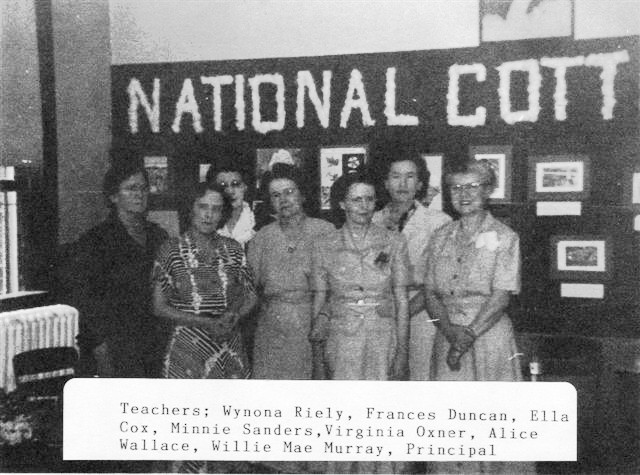
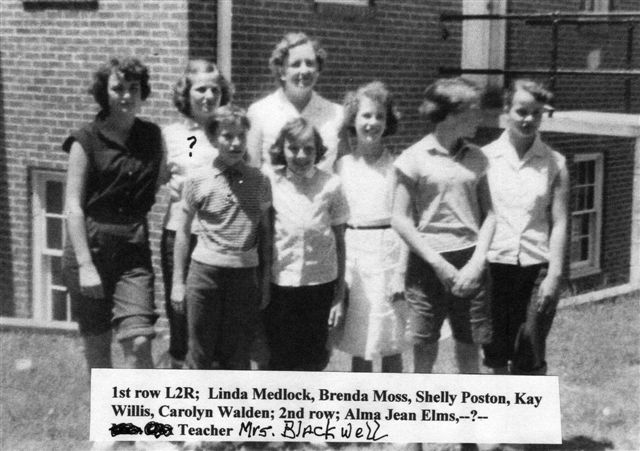
Make no mistake about it, as parents and grandparents, we are proud of the schools where our children, grandchildren and great grandchildren attend today. District three is a top notch school system. They have modern buildings, tools, technologies and a wonderful staff and faculty. Yet, those of us who attended the little red brick school house in the heart of Glendale where we were taught the basic fundamentals of reading, writing and arithmetic, plus a few tricks of mischief during recess, will never forget the atmosphere of a warm spirit of friendship, kinship and love felt between students and teachers alike.
A humorous incident at Glendale school ; There was a man living in the Glendale village in the 1930s who was known as "Lying Tobo". Not really, I am not disclosing his actual nick name lest someone feel offended though he has long since been dead. In jest, he could tell you a tall tale in a matter of seconds without batting an eye. The students looked forward to his passing in order to hear his home spun tale. One day passing the school, some of the students asked him to tell them a lie. “Ain’t got time” he said while walking in a fast trot. “Mr. Roger’s house is on fire”.
Hearing that, some of the boys grabbed a fire hose cart located beside the school and ran off down the hill to help fight fire. This was Mrs. Murray’s father’s house. Arriving at the home, the boys were surprised to see Mrs. Rogers sweeping the yard and no signs of a fire. "Lying Tobo" had told a lie not having time. Needless to say, after climbing back up the hill pulling the fire hose cart, the boys were ready to turn the fire hose on him.
